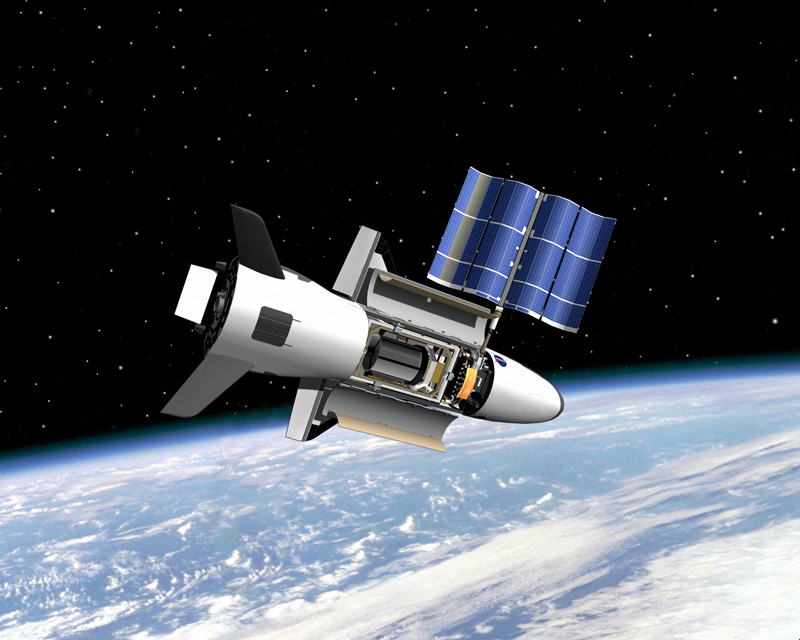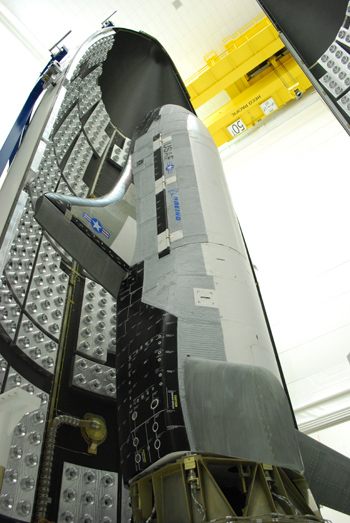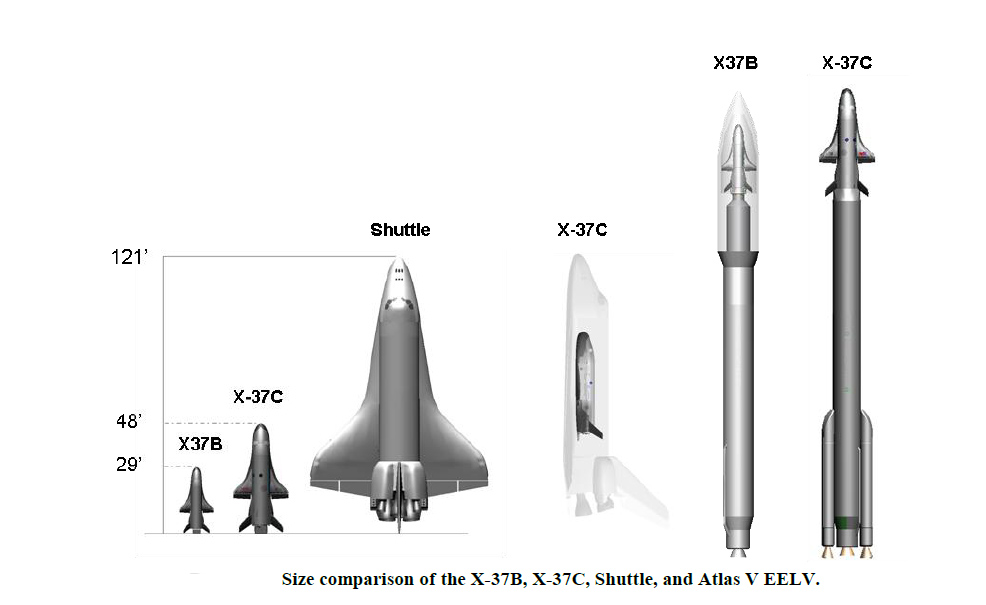
Air Force's Mysterious X-37B Space Plane Survives 1 Year in Orbit

The U.S. Air Force's robotic X-37B space plane has celebrated a silent anniversary, surpassing an entire year in Earth orbit on a mystery mission for American military. Meanwhile, a third X-37B space plane mission is being readied, and could even launch later this year, SPACE.com has learned.
The X-37B space plane currently orbiting Earth is the second spacecraft of its kind built for the Air Force by Boeing’s Phantom Works. Known as the Orbital Test Vehicle 2, or OTV-2, its classified mission is under the wing of the Air Force Rapid Capabilities Office.
The robotic X-37B space plane is a reusable spacecraft that resembles a miniature space shuttle. The Air Force launched the OTV-2 mission on March 5, 2011, with an unmanned Atlas 5 rocket lofting the space plane into orbit from the Cape Canaveral Air Force Station in Florida.
"We are very pleased with the results of ongoing X-37B experiments," Air Force Lt. Col. Tom McIntyre of the Air Force Rapid Capabilities Office told SPACE.com. "The X-37B program is setting the standard for a reusable space plane and, on this one-year orbital milestone, has returned great value on the experimental investment," he told SPACE.com. [Photos: Inside the X-37B Mission]
What the robotic space plane has been doing in orbit for so long remains a mystery, since Air Force officials have not commented on the flight's details due to its classified nature. Outside experts, however, have suggested that the flight is testing the limits of the X-37B space plane, or possibly serving as an orbital spy platform.
McIntyre dropped no hints, except to suggest that the next X-37B flight could launch later this year.
"Upon completion of all objectives, we look forward to bringing the mission to a safe, successful conclusion. The next program phase, the third X-37B mission, has been tentatively planned for the fall of 2012," McIntyre said.
Breaking space news, the latest updates on rocket launches, skywatching events and more!
Each X-37B space plane is about 29 feet (8.8 meters) long and 15 feet (4.5 meters) wide. It has a payload bay about the size of a pickup truck bed. It is outfitted with a deployable solar array power system. What’s inside that payload bay, and what functions they serve, are classified.
Like NASA's now-retired space shuttle, the X-37B space planes are capable of returning experiments to Earth for inspection and analysis, as well as re-flight of equipment.

One year in space
The maiden voyage of an X-37B space plane, the OTV-1 mission, launched in 2010 on a flight that lasted 225 days. That initial mission spacecraft lifted off on April 22 and landed on Dec. 3, gliding onto a specially prepared runway at Vandenberg Air Force Base in California.
So far, the OTV-2 mission has set an endurance record for the X-37B space plane — one that gets longer with each passing day — and the spacecraft is in good health, Air Force officials said.
According to Air Force Maj. Tracy Bunko, a Pentagon spokesperson for the X-37B program, "the mission is still on track and the vehicle is performing well."
Bunko said the flight of the vehicle is being extending as circumstances allow, in order to obtain maximum value out of the mission. "We don’t know when we'll land, but we regularly evaluate that based on test objectives."
The X-37B space plane originated as a NASA spacecraft research project, but lack of funding led the agency to transfer the program to the Defense Advanced Research Agency in 2004. The Air Force took control of the project in 2006, and has launched two apparently successful missions so far.

Skywatchers track space plane
Ted Molczan, a Toronto, Canada-based satellite watcher and spacecraft analyst, offered his view of what the X-37B space plane might be up to.
"I do not know OTV-2's mission, but its frequently repeating ground track may be a clue that it is gathering imagery intelligence. Ground tracks that repeat at intervals of two, three or four days have long been favored for U.S. imagery intelligence satellites, because they enable frequent monitoring of targets of interest," Molczan told SPACE.com.
In an Internet posting to his fellow amateur skywatchers, Molczan said the X-37B's altitude has changed little since launch, and it has been at about 331 kilometers by 342 kilometers.
The OTV-2 spacecraft's ground track repeats after every 31 revolutions, in just under two days, Molczan added. The mission of the first X-37B vehicle operated in several different orbits, most of which repeated every two to four days, he said.
Molczan and other skywatchers have also managed to catch video of the X-37B space plane in orbit as it sailed across the night sky.
Whenever this second X-37B mission concludes, the craft is designed to make a "do-it-itself" guided entry and wheels-down runway landing at Vandenberg Air Force Base in California. An alternate desert landing site is neighboring Edwards Air Force Base, Calif., mission officials have said.
Leonard David has been reporting on the space industry for more than five decades. He is a winner of last year's National Space Club Press Award and a past editor-in-chief of the National Space Society's Ad Astra and Space World magazines. He has written for SPACE.com since 1999.
Join our Space Forums to keep talking space on the latest missions, night sky and more! And if you have a news tip, correction or comment, let us know at: community@space.com.

Leonard David is an award-winning space journalist who has been reporting on space activities for more than 50 years. Currently writing as Space.com's Space Insider Columnist among his other projects, Leonard has authored numerous books on space exploration, Mars missions and more, with his latest being "Moon Rush: The New Space Race" published in 2019 by National Geographic. He also wrote "Mars: Our Future on the Red Planet" released in 2016 by National Geographic. Leonard has served as a correspondent for SpaceNews, Scientific American and Aerospace America for the AIAA. He has received many awards, including the first Ordway Award for Sustained Excellence in Spaceflight History in 2015 at the AAS Wernher von Braun Memorial Symposium. You can find out Leonard's latest project at his website and on Twitter.
